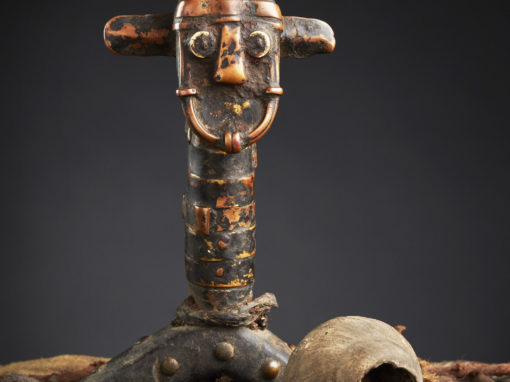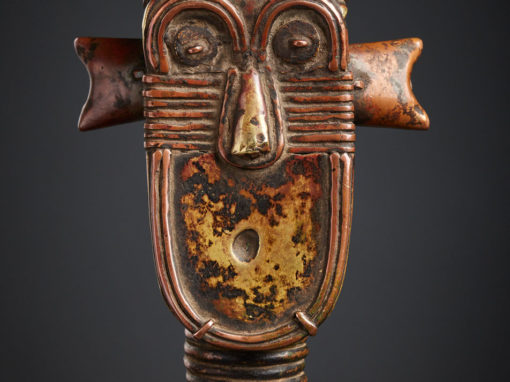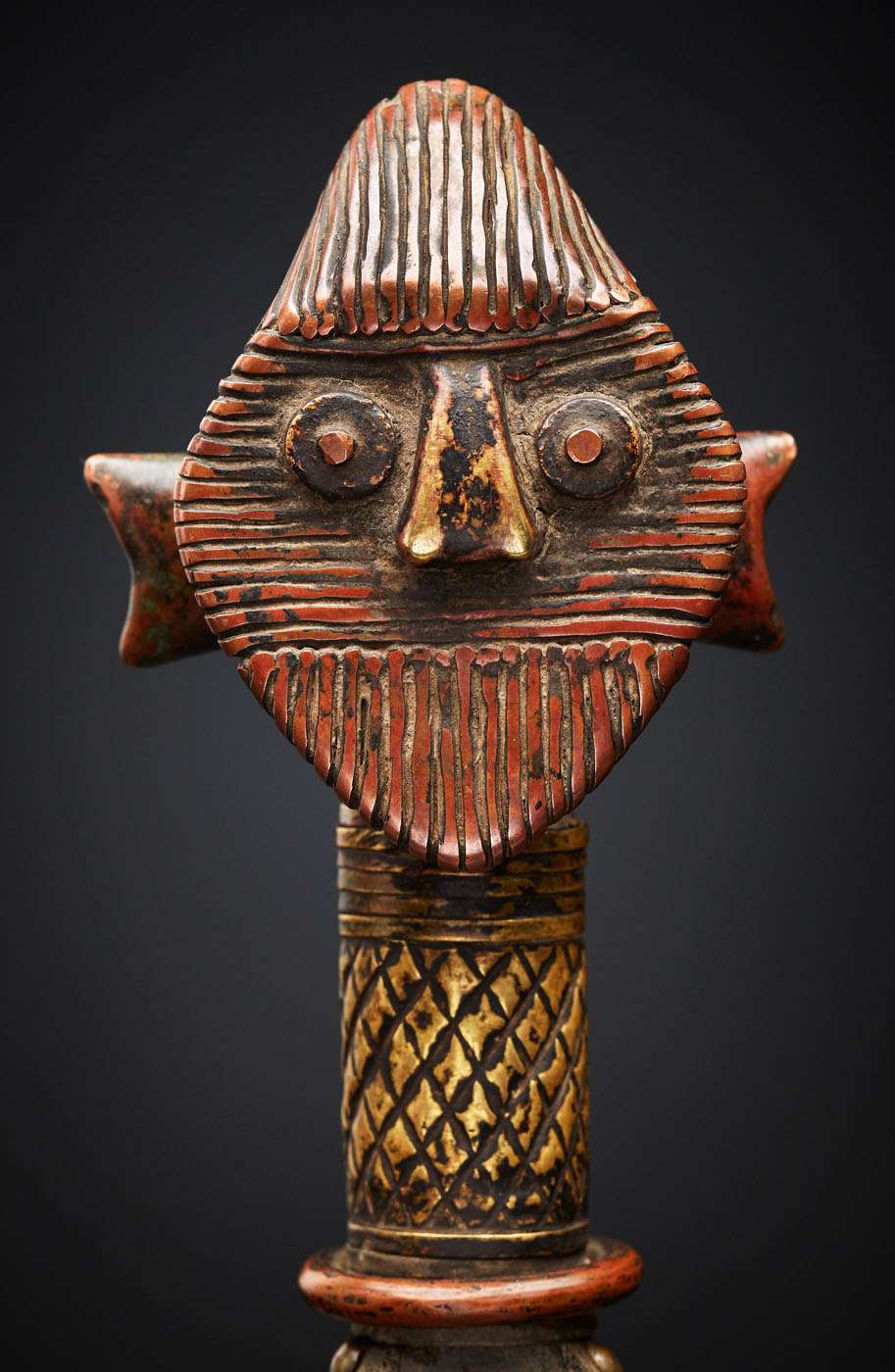
Sculptural element from a reliquary ensemble – Kota Shamaye (or Kota Sango)
origin: equatorial forrest, africa
region: gabon, (Massango, Sango, Shamaye)
age : XIX – XXth century
figure: KOTA, „boho-na-bwete”, reliquary figure (figure de reliquaire)
size / material: hight 27,5 cm / head ear to ear 9,6 cm/ rhombus 8,0 cm / neck 3,4 cm / lower base 5,7 cm – wood, brass, copper, bone, plant material, nails
This last KOTA from a group of three also seem to be related stylistically to the „SANGO“ or even further north to the „SHAMAYE“.
This masterfull abstract object displays skill and perfection on the highest level possible.
Like the two other KOTA`s this rare example was also found and sold to the collection by Mr. Issah Mbohou, Bruxelles.
All three objects are from the same african village, area and family close to Ndumu group in the region of the river Sébé.
Based on the information received from the remaining family they could date back three or even four generations. The name of the family chief changed in the course of time with the pre-colonial name beeing Ongwé Mboumu wich than ended up beeing Jan Pierre Mbumu post colonial.
These objects have stayed within the family longer than a century until they were sold to our collection with this being the last figure acquired.
All three KOTAS remain united in the collection today and are a most rare and unique group unmatched in quality. They believed to be all made by the same hand.
The human form reduced to the essence is characteristic for this group of reliquary figures produced by the SANGO or SHAMAYE of gabon.
This KOTA figure displays a new level of minimalism and abstraction wich is absolute unique compared to all known KOTAS in the world.
The forehead wich partly resembles a square like diamond shape reveals a face that contains 67 single hammer flattened copper wires. Solid metal studs hold in place the eyes made of bone arranged together with the almost cubistic nose in this slightly concave face. The wires lining 90° downward on the lower part almost create a resemblance of lips pressed together in grim. A similar effect can be seen at the top part wich closely resembles eyebrows frowning in anger.
What a sight this bold figure must have been at night or dawn with only the moonlight or fire reflecting off the surface.
The head of this effigy rests on a short neck covered and wrapped with hammered brass bands on the top and bottom part only separated by a section of brass masterfully showing fine and even ornamental decoration. There is a solid, moveable metal ring visible wich has a pendant on the bottom covered by plant material.
Shoulders and arms are executed as a small rhombus that suggests the indication of a body highlighted by rows of brass nails in the front and on top.
The puristic balance is underlined by the stylized ears pointing sharply outwards from the sides oft the head in a dark shade of cooper.
The „hair“ style is sublime and not specifically executed. Carved out from the logg of wood it shows similarity to a truncated cone that tsogo women reportedly wore around 1860/1870.
This „small KOTAs“ uniqueness and beauty is unmatched by any other KOTA known.
It is clearly seen wich skill was necessary to imagine and execute a figure like this – only a master would have been able to succseed !
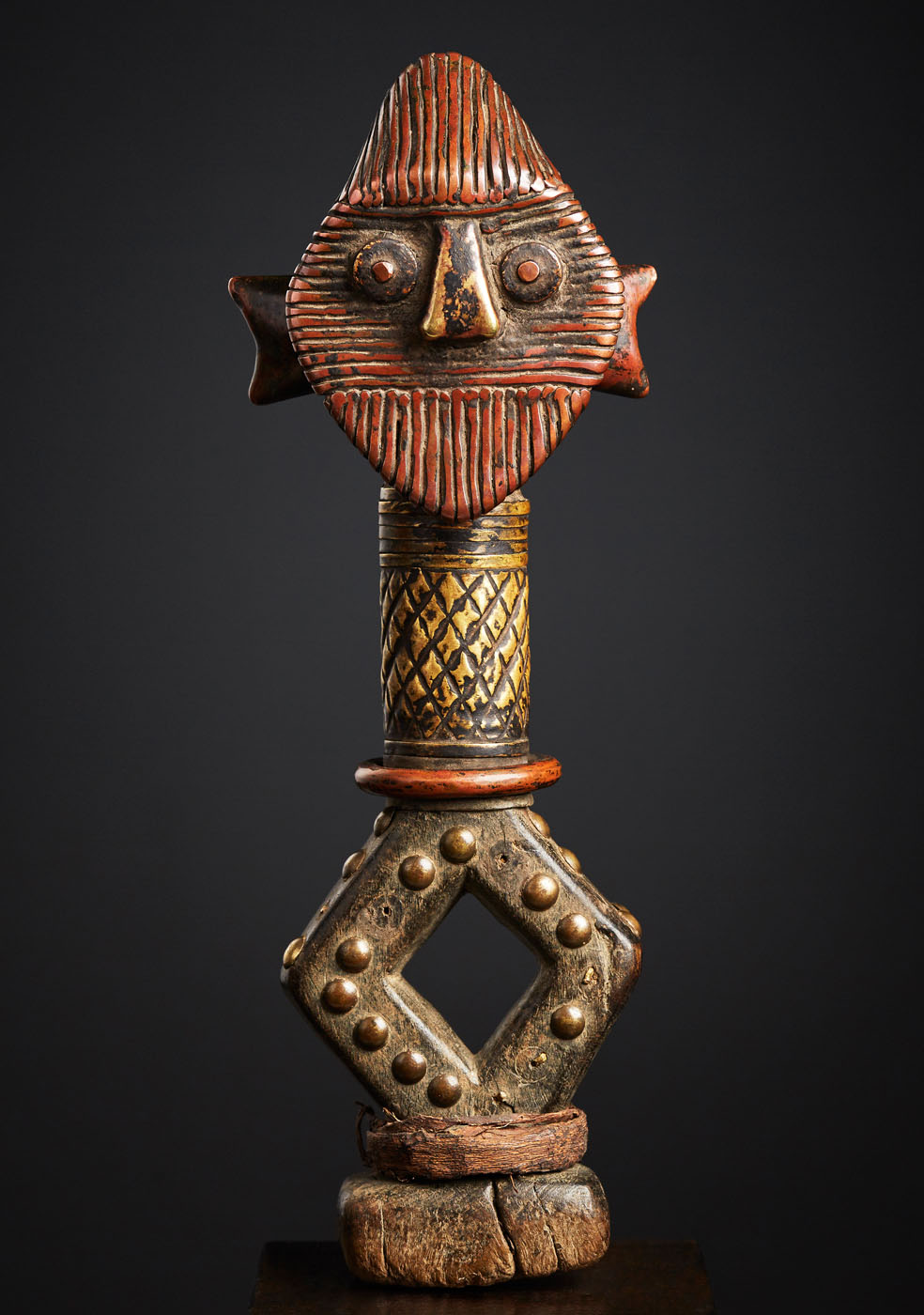
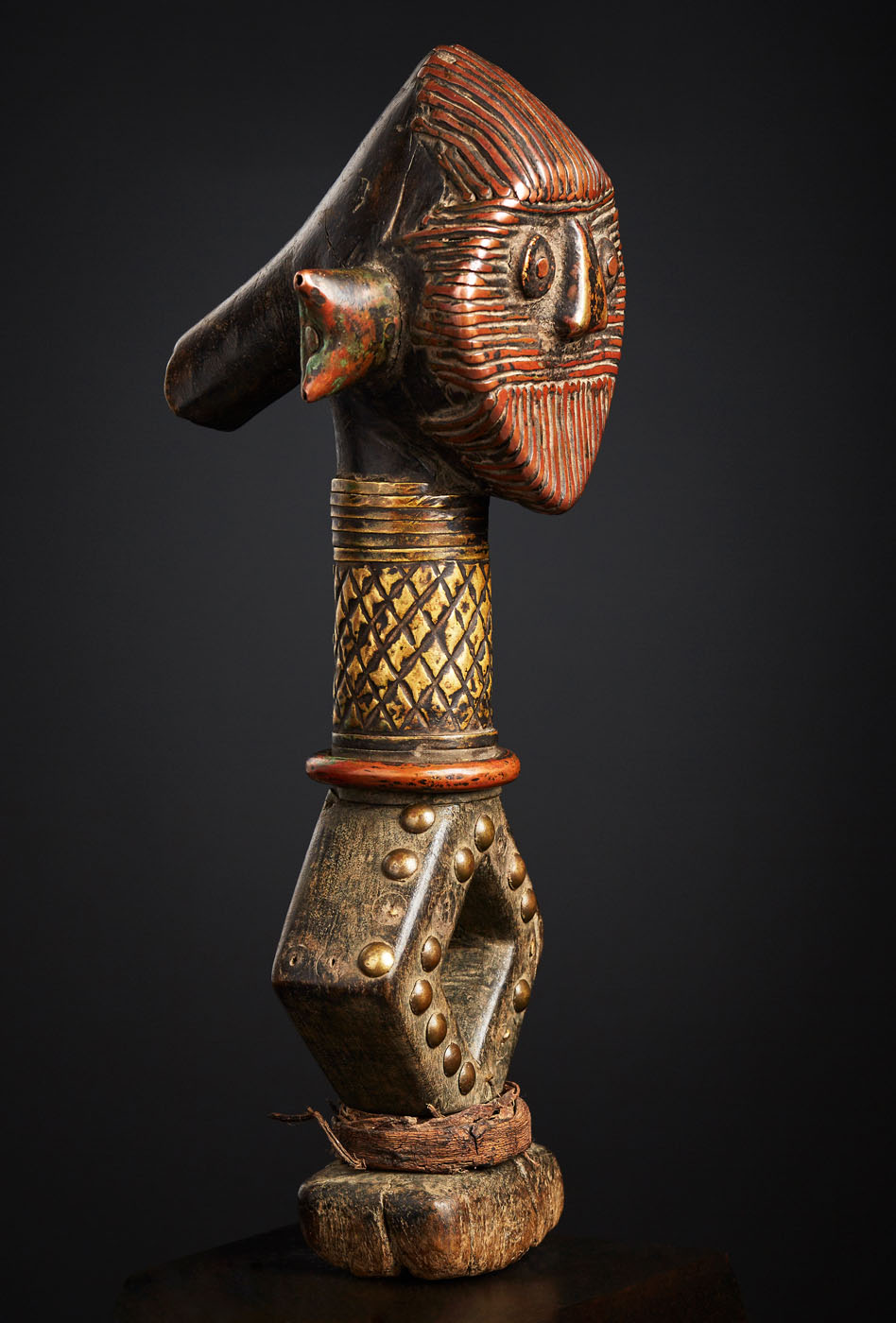
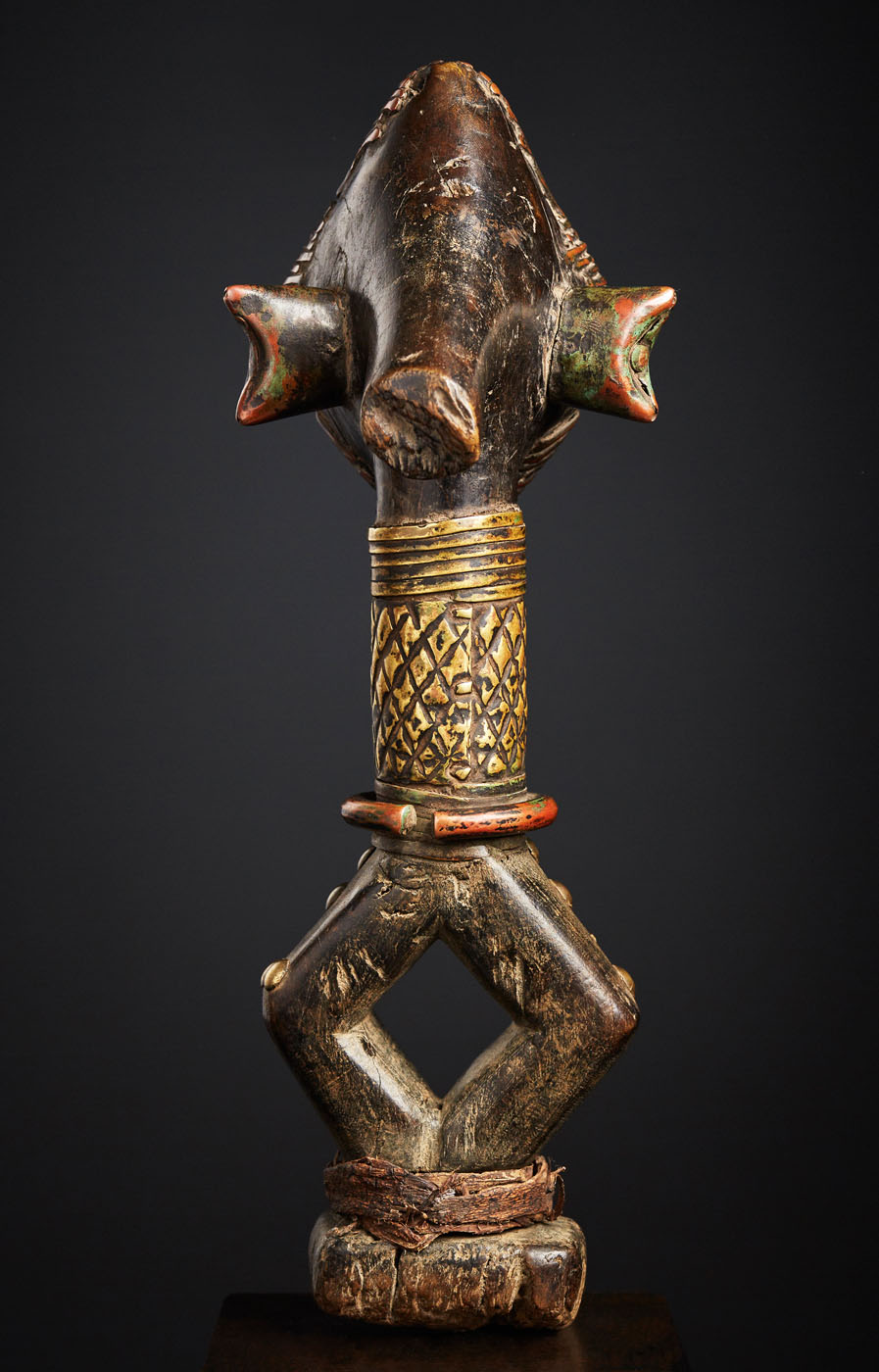
References:
See similar details on the „rhombus brass nails“ on a Kota Sango reliquary figure sold by sothebys 05th of May 2017 // Private collection USA
See similar details on use of „brass nails“ on a not related masterpiece that clearly dated before 1910 // deux cuilleres auctioned by christies //from the collection of Bernhard et Bertrand Bottet, nice
See similar details on use of „brass nails“ on a not related masterpiece that clearly dated before 1910 // D.R. Congo Vili // Collection Alain Guisson, Bruxelles
See similar details on „height“ on a Kota Sangu, Mbumba reliquary figure, book „Afrikanische Kunst – aus der Sammlung Barbier-Mueller, Prestek Verlag 1988
See similar details on the hair style „truncated cone“ from a Kota reliquary figure on a photo published May 06th 2013, from the Gustave and Franyo Schindler Collection of african sculpture

